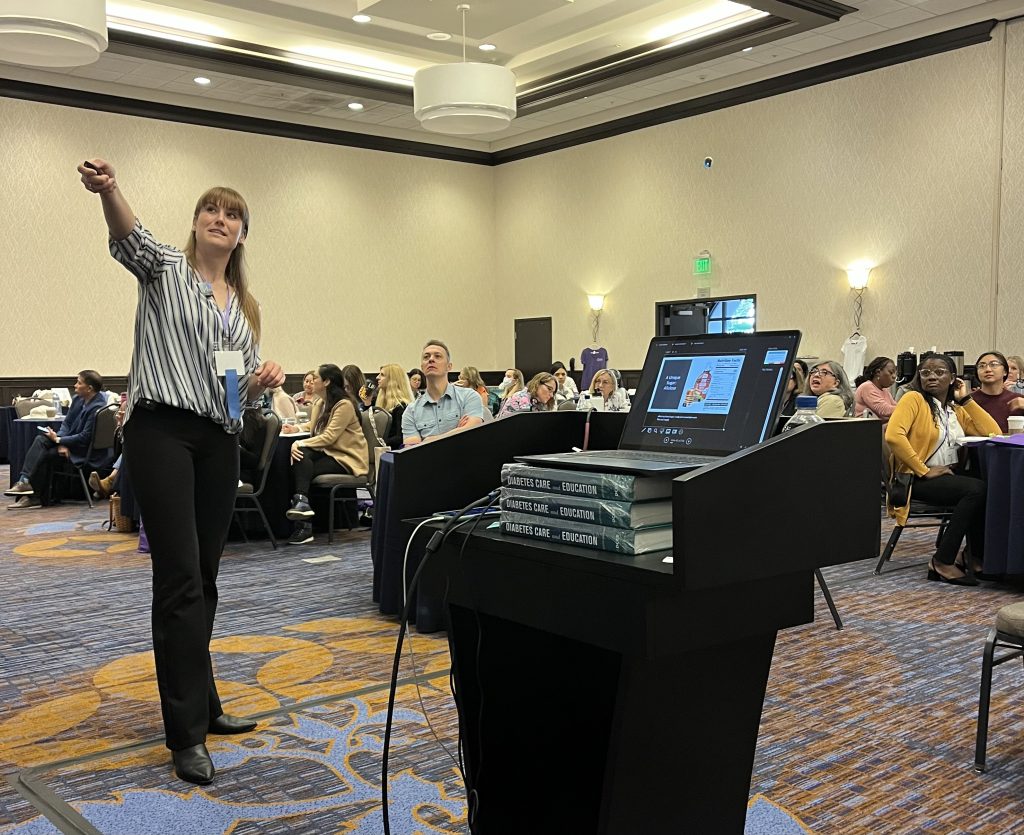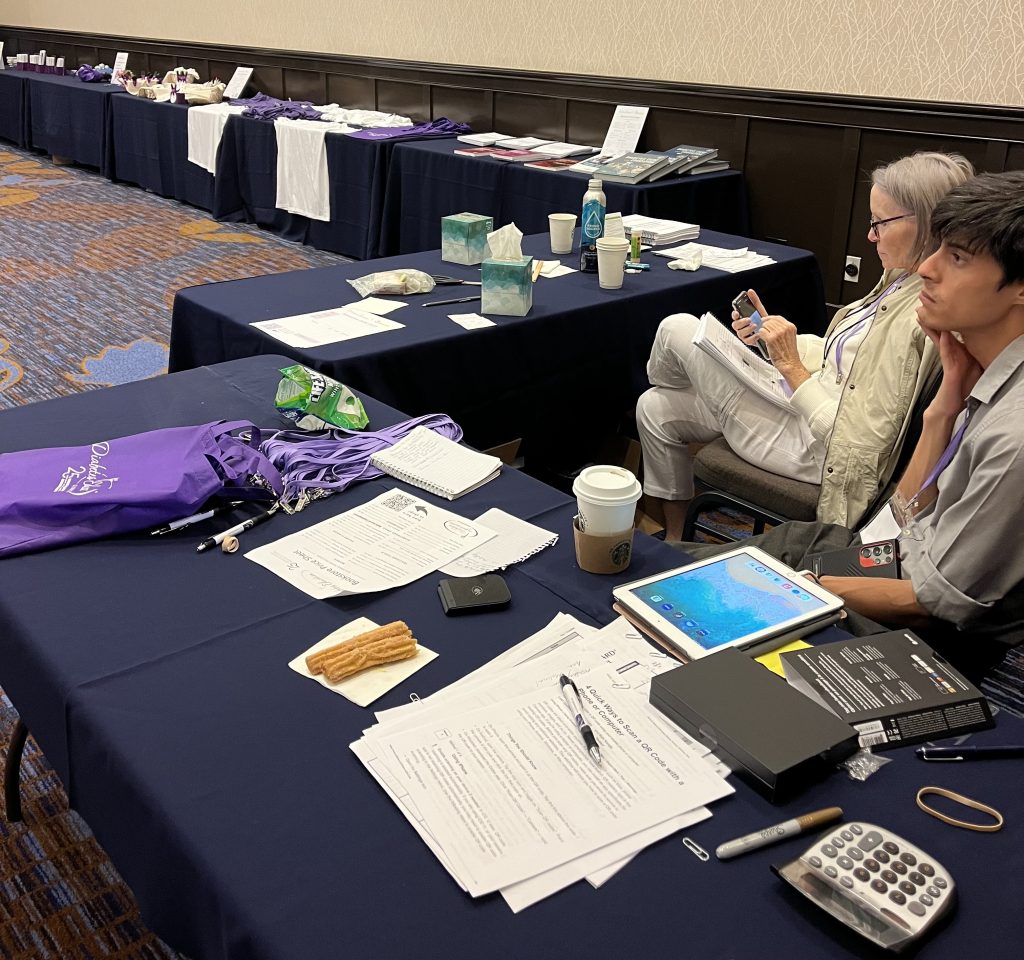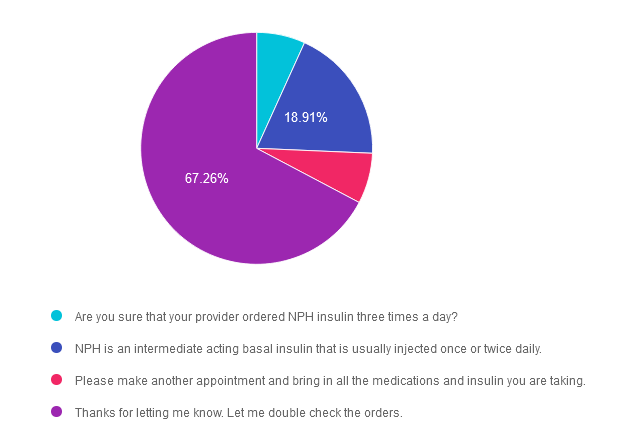FREE Webinar | From the Gut to the Butt – Exploring the GI System | Now Recorded & Ready to Watch
Join the wonderment as we explore the role of our GI System
Now Recorded & Ready to Watch

Coach Bev invites you to join this 60-minute webinar that covers gastrointestinal health from top to bottom. Topics include; fatty liver disease diagnosis and treatment, intestinal complications associated with diabetes, keeping the microbiome healthy, and more. Join us to explore the magnificent wonders of diabetes and the gut.
New content and exciting research findings! Join the wonderment as we explore the impact of our GI System on our health.
Topics covered include:
- From the Mouth to Intestines: Periodontal disease, Gastroparesis, Fatty liver disease, pancreas disorders
- Intestine as an Endocrine Organ & Bacterial Host
- NASH Treatment Options including lifestyle and pharmacotherapy
- State the relationship between gut health, microbiome and diabetes and inflammation
- Describe 3 strategies to get our microbiome back to better health.
Intended Audience: These courses are knowledge-based activities designed for individuals or groups of diabetes educators, including RNs, RDs, Pharmacists, Nurse Practitioners, Clinical Nurse Specialists, Physician Assistants, and other health care providers interested in enhancing their diabetes and microbiome knowledge
Instructor: Beverly Thomassian RN, MPH, CDCES, BC-ADM is a working diabetes specialist and a nationally recognized diabetes expert.
Two registration options
Enroll in our entire Level 4 | Advanced & Specialty Topic Courses All courses air at 11:30 a.m. (PST)
All hours earned count toward your CDCES Accreditation Information
Sign up for Diabetes Blog Bytes – we post one daily Blog Byte from Monday to Friday. And of course, Tuesday is our Question of the Week. It’s Informative and FREE! Sign up below!
The use of DES products does not guarantee the successful passage of the CDCES exam. CBDCE does not endorse any preparatory or review materials for the CDCES exam, except for those published by CBDCE.
Question of the Week | What does a Liver Elastography Reveal?

The provider is sending JR for a Liver Elastography or FibroScan test since JR has elevated ALT and AST levels along with an elevated Fib-4 score.
Which of the following are measured during this liver ultrasound procedure?
- Liver diameter and density.
- Liver scarring and ductal health.
- Hepatocyte density and distribution.
- Liver stiffness and fat density.
Click Here to Test your Knowledge
Want to learn more about the GI System and Diabetes?
Exploring the GI System – From the Gut to the Butt | FREE Webinar
Now Recorded & Ready to Watch

Coach Bev invites you to join this 60 minute webinar that covers gastrointestinal health from top to bottom. Topics include; fatty liver disease diagnosis and treatment, intestinal complications associated with diabetes, keeping the microbiome healthy, and more. Join us to explore the magnificent wonders of diabetes and the gut.
Getting to the Gut Topics:
- From the Mouth to Intestines: Periodontal disease, Gastroparesis, Fatty liver disease, pancreas disorders
- Intestine as an Endocrine Organ & Bacterial Host
- NASH Treatment Options including lifestyle and pharmacotherapy
- State the relationship between gut health, microbiome and diabetes and inflammation
- Describe 3 strategies to get our microbiome back to better health.
Can’t make it live? No worries. We will send post the recorded version to the Online University within 24 hours of the broadcast
Instructor: Beverly Thomassian RN, MPH, CDCES, has been Board Certified in Advanced Diabetes Management for over 20 years. She is an Associate Clinical Professor at UCSF, a working educator, and a nationally recognized diabetes expert. She has a Master’s Degree in Public Health from UCLA, with a focus on behavioral health and education.
All hours earned count toward your CDCES Accreditation Information
Diabetes and the Gut – ADCES Hawaii Annual Conference with Coach Beverly
October 27, 2023 – Join us in beautiful Oahu & Earn 6.5 CEs

ADCES Hawaii Chapter & Coach Bev invite you to join this class that covers gastrointestinal health from top to bottom. Topics include; fatty liver disease diagnosis and treatment, intestinal complications associated with diabetes, keeping the microbiome healthy, and more. Join us to explore the magnificent wonders of diabetes and the gut.
Location: Honolulu Country Club, 1689 Ala Pu’umalu Street, Honolulu, HI
CEs: 6.5 CEs for physicians, nurses, pharmacists, physician assistants, dieticians & social workers.
Sign up for Diabetes Blog Bytes – we post one daily Blog Byte from Monday to Friday. And of course, Tuesday is our Question of the Week. It’s Informative and FREE! Sign up below!
The use of DES products does not guarantee the successful passage of the CDCES exam. CBDCE does not endorse any preparatory or review materials for the CDCES exam, except for those published by CBDCE.
FREE Diabetes Webinars

Earlier this month, we had the joy of seeing many of you at our Live Seminar in San Diego.
Below are some photos that capture the joy of gathering in person, networking, and information sharing. Given the attendance and enthusiasm of the group, we have decided to hold this training again in 2024! We hope to see you in October 2024 in San Diego.
In addition, we have two FREE upcoming webinars, and a “Save the Date” for our Cyber Monday Sale on November 27th!
We love our community and appreciate your dedication to improving diabetes care!
Thank you! Coach Beverly & Team
Upcoming FREE & Webinars for CE units
- Basal Bolus Therapy in Hospitals – Oct. 24th
- CDCES Cert Prep Webinar – FREE – Nov. 14th
- From the Gut to the Butt – FREE Webinar – Nov. 16th
- Hyperglycemic Crises, DKA & HHS – Dec. 12th
- How to Assess Well-Being – Dec. 19th
- Meds Management Update for Type 2 – Dec. 21st
Photos from the DiabetesEd Training Conference in San Diego




















Sign up for Diabetes Blog Bytes – we post one daily Blog Byte from Monday to Friday. And of course, Tuesday is our Question of the Week. It’s Informative and FREE! Sign up below!
The use of DES products does not guarantee the successful passage of the CDCES exam. CBDCE does not endorse any preparatory or review materials for the CDCES exam, except for those published by CBDCE.
Rationale of the Week | Best Treatment for H. pylori?

For last week’s practice question, we quizzed participants on treating H. pylori. 78.42% of respondents chose the best answer. We want to clarify and share this important information, so you can pass it on to people living with diabetes and your colleagues, plus prepare for exam success!
Before we start though, if you don’t want any spoilers and haven’t tried the question yet, you can answer it below: Answer Question
Question: JR is 50, has type two diabetes, and was referred to G.I. due to six months of stomach pain, intestinal, bloating, and generalized G.I. discomfort. Since they were due for their colonoscopy, the doctor also ordered an upper endoscopy to biopsy the esophagus, stomach and duodenum for any abnormalities.
The biopsy revealed that JR had moderate chronic gastritis and an H. pylori infection. JR wants to learn more about H. pylori infection.
Which of the following statements are accurate?
Answer Choices:
- Since H. pylori is found in about half the population, it is a normal finding, and there is no need for treatment.
- Treatment includes double antibiotic therapy and a medication to decrease gastric acidity.
- The preferred treatment is the consumption of prebiotics and probiotics to increase bacterial diversity.
- Most people with H. pylori infection experience stomach cancer within the next 20 years.

Getting to the Best Answer
If you are thinking about taking the certification exam, this practice test question will set you up for success. Test writers anticipate possible answers based on the details in the question. They will wave those “juicy answers” right under your nose. Your job is to weed through the particulars, pluck out the most important elements and choose the BEST answer.
Answer 1 is incorrect. 5.27% chose this answer. “Since H. pylori is found in about half the population, it is a normal finding, and there is no need for treatment.” It is true that 50% of people worldwide house H. plyori in their stomach. However, in a small percentage of human hosts, this little bacteria “goes rogue” and causes gastritis, loss of stomach mucous lining, peptic ulcers and can be associated with some stomach cancers.
Answer 2 is correct. 78.42% of you chose this answer. “Treatment includes double antibiotic therapy and a medication to decrease gastric acidity.” YES, GREAT JOB. According to the Cleveland Clinic, 2 antibiotics and a proton pump inhibitor are prescribed to address H. pylori infections.
Antibiotics: Among the common choices are amoxicillin, clarithromycin (Biaxin®), metronidazole (Flagyl®) and tetracycline.
Proton pump inhibitor: Commonly used proton pump inhibitors include lansoprazole (Prevacid®), omeprazole (Prilosec®), pantoprazole (Protonix®), rabeprazole (Aciphex®) or esomeprazole (Nexium®).
Answer 3 is incorrect. About 13.84% of respondents chose this. “The preferred treatment is the consumption of prebiotics and probiotics to increase bacterial diversity.” Consuming prebiotics and probiotics are a recommended adjunctive therapy to antibiotics and a proton pump inhibitor. However, current evidence does not support pre and probiotics as the only treatment.
Finally, Answer 4 is incorrect. 2.47% chose this answer.” Most people with H. pylori infection experience stomach cancer within the next 20 years.” There is a slightly increased risk (~5%) of stomach cancer for those with H. plyori infection, especially if the H. pylori isn’t treated or if there is a family history of stomach cancer. This answer is suspicious because of the extreme statement that “Most” people get cancer from this bacteria gone rogue.
We hope you appreciate this week’s rationale! Thank you so much for taking the time to answer our Question of the Week and participate in this fun learning activity!
Want to learn more about the GI System and Diabetes?
From the Gut to the Butt – Exploring the GI System FREE Webinar
Now Recorded & Ready to Watch

Coach Bev invites you to join this 60 minute webinar that covers gastrointestinal health from top to bottom. Topics include; fatty liver disease diagnosis and treatment, intestinal complications associated with diabetes, keeping the microbiome healthy, and more. Join us to explore the magnificent wonders of diabetes and the gut.
Getting to the Gut Topics:
- From the Mouth to Intestines: Periodontal disease, Gastroparesis, Fatty liver disease, pancreas disorders
- Intestine as an Endocrine Organ & Bacterial Host
- NASH Treatment Options including lifestyle and pharmacotherapy
- State the relationship between gut health, microbiome and diabetes and inflammation
- Describe 3 strategies to get our microbiome back to better health.
Can’t make it live? No worries. We will send post the recorded version to the Online University within 24 hours of the broadcast
Instructor: Beverly Thomassian RN, MPH, CDCES, has been Board Certified in Advanced Diabetes Management for over 20 years. She is an Associate Clinical Professor at UCSF, a working educator, and a nationally recognized diabetes expert. She has a Master’s Degree in Public Health from UCLA, with a focus on behavioral health and education.
All hours earned count toward your CDCES Accreditation Information
Diabetes and the Gut – ADCES Hawaii Annual Conference with Coach Beverly
October 27, 2023 – Join us in beautiful Oahu & Earn 6.5 CEs

ADCES Hawaii Chapter & Coach Bev invite you to join this class that covers gastrointestinal health from top to bottom. Topics include; fatty liver disease diagnosis and treatment, intestinal complications associated with diabetes, keeping the microbiome healthy, and more. Join us to explore the magnificent wonders of diabetes and the gut.
Location: Honolulu Country Club, 1689 Ala Pu’umalu Street, Honolulu, HI
CEs: 6.5 CEs for physicians, nurses, pharmacists, physician assistants, dieticians & social workers.
Sign up for Diabetes Blog Bytes – we post one daily Blog Byte from Monday to Friday. And of course, Tuesday is our Question of the Week. It’s Informative and FREE! Sign up below!
The use of DES products does not guarantee the successful passage of the diabetes certification exams. CBDCE & ADCES does not endorse any preparatory or review materials for the certification exams, except for those published by CBDCE & ADCES.
Rationale of the Week | G-POEM for Gastroparesis?

For last week’s practice question, we quizzed participants on reviewing insulin dosing adjustments. 69% of respondents chose the best answer. We want to clarify and share this important information, so you can pass it on to people living with diabetes and your colleagues, plus prepare for exam success!
Before we start though, if you don’t want any spoilers and haven’t tried the question yet, you can answer it below: Answer Question
Question: JR lives with type 1 diabetes and severe gastroparesis, despite maintaining an A1C of less than 7% for the past few years. The endocrinologist referred JR to a GI specialist, who recommended a surgical procedure called a Gastric Peroral Endoscopic Myotomy, G-POEM, to address JR’s longstanding gastroparesis.
JR asks what you think about this intervention. What is the best response?
Answer Choices:
- It sounds like you are worried about the effectiveness and risks of this procedure. Is that right?
- Tell me more about what your GI doctor told you about this procedure.
- I know you are frustrated, but the primary treatment for gastroparesis is low fiber meals.
- Usually, gastroparesis improves as your A1C reaches target so I would wait and see if things improve.

Getting to the Best Answer
If you are thinking about taking the certification exam, this practice test question will set you up for success. Test writers anticipate possible answers based on the details in the question. They will wave those “juicy answers” right under your nose. Your job is to weed through the particulars, pluck out the most important elements and choose the BEST answer.
Answer 1 is incorrect. 28.90% chose this answer. “It sounds like you are worried about the effectiveness and risks of this procedure. Is that right?” This tempting answer is not the best answer since JR never states that they are worried about the effectiveness of the G-POEM. Instead they just want to see what the Diabetes Care and Education Specialist thinks about this procedure. When in doubt, re-examine the key intent of the question.
Answer 2 is correct. 69.27% of you chose this answer. “Tell me more about what your GI doctor told you about this procedure.” YES, this is the BEST answer. Great job. By asking what JR knows about the procedure, we provide JR an opportunity to share their knowledge and assess areas of concern. In addition, we may let JR know that we haven’t heard of this procedure, but we will look into it.
Answer 3 is incorrect. About 0.92% of respondents chose this. “I know you are frustrated, but the primary treatment for gastroparesis is low fiber meals.” It is true that we recommend low fiber meals for gastroparesis, but JR was asking about a procedure not meal planning.
Finally, Answer 4 is incorrect. 0.92% chose this answer. “Usually, gastroparesis improves as your A1C reaches target so I would wait and see if things improve.” It is true that the stomach is better at moving its’ content forward when blood sugars are closer to target most of the time. But, sometimes, despite having an A1C on target, severe autonomic neuropathy interferes with stomach propulsion past the pyloric sphincter.
We hope you appreciate this week’s rationale! Thank you so much for taking the time to answer our Question of the Week and participate in this fun learning activity!
Want to learn more about the GI System and Diabetes?
From the Gut to the Butt – Exploring the GI System FREE Webinar
Now Recorded & Ready to Watch

Coach Bev invites you to join this 60 minute webinar that covers gastrointestinal health from top to bottom. Topics include; fatty liver disease diagnosis and treatment, intestinal complications associated with diabetes, keeping the microbiome healthy, and more. Join us to explore the magnificent wonders of diabetes and the gut.
Getting to the Gut Topics:
- From the Mouth to Intestines: Periodontal disease, Gastroparesis, Fatty liver disease, pancreas disorders
- Intestine as an Endocrine Organ & Bacterial Host
- NASH Treatment Options including lifestyle and pharmacotherapy
- State the relationship between gut health, microbiome and diabetes and inflammation
- Describe 3 strategies to get our microbiome back to better health.
Can’t make it live? No worries. We will send post the recorded version to the Online University within 24 hours of the broadcast
Instructor: Beverly Thomassian RN, MPH, CDCES, has been Board Certified in Advanced Diabetes Management for over 20 years. She is an Associate Clinical Professor at UCSF, a working educator, and a nationally recognized diabetes expert. She has a Master’s Degree in Public Health from UCLA, with a focus on behavioral health and education.
All hours earned count toward your CDCES Accreditation Information
Sign up for Diabetes Blog Bytes – we post one daily Blog Byte from Monday to Friday. And of course, Tuesday is our Question of the Week. It’s Informative and FREE! Sign up below!
The use of DES products does not guarantee the successful passage of the diabetes certification exams. CBDCE & ADCES does not endorse any preparatory or review materials for the certification exams, except for those published by CBDCE & ADCES.
Question of the Week | Do glucose levels impact gastric emptying?

Glucose fluctuations can impact gastric emptying rates.
Which of the following is the MOST accurate statement that describes the impact of glucose levels on gastric emptying rates?
- Chronic hyperglycemia is associated with delayed gastric emptying.
- Hypoglycemia is associated with delayed gastric emptying and increased glucagon secretion.
- Hyperglycemia can lead to delayed or rapid gastric emptying.
- Gastric emptying rates are usually about 10-40 kcals per minute regardless of glucose levels.
Click Here to Test your Knowledge
Want to learn more about the GI System and Diabetes?
From the Gut to the Butt – Exploring the GI System FREE Webinar
Now Recorded & Ready to Watch

Coach Bev invites you to join this 60 minute webinar that covers gastrointestinal health from top to bottom. Topics include; fatty liver disease diagnosis and treatment, intestinal complications associated with diabetes, keeping the microbiome healthy, and more. Join us to explore the magnificent wonders of diabetes and the gut.
Getting to the Gut Topics:
- From the Mouth to Intestines: Periodontal disease, Gastroparesis, Fatty liver disease, pancreas disorders
- Intestine as an Endocrine Organ & Bacterial Host
- NASH Treatment Options including lifestyle and pharmacotherapy
- State the relationship between gut health, microbiome and diabetes and inflammation
- Describe 3 strategies to get our microbiome back to better health.
Can’t make it live? No worries. We will send post the recorded version to the Online University within 24 hours of the broadcast
Instructor: Beverly Thomassian RN, MPH, CDCES, has been Board Certified in Advanced Diabetes Management for over 20 years. She is an Associate Clinical Professor at UCSF, a working educator, and a nationally recognized diabetes expert. She has a Master’s Degree in Public Health from UCLA, with a focus on behavioral health and education.
All hours earned count toward your CDCES Accreditation Information
Diabetes and the Gut – ADCES Hawaii Annual Conference with Coach Beverly
October 27, 2023 – Join us in beautiful Oahu & Earn 6.5 CEs

ADCES Hawaii Chapter & Coach Bev invite you to join this class that covers gastrointestinal health from top to bottom. Topics include; fatty liver disease diagnosis and treatment, intestinal complications associated with diabetes, keeping the microbiome healthy, and more. Join us to explore the magnificent wonders of diabetes and the gut.
Location: Honolulu Country Club, 1689 Ala Pu’umalu Street, Honolulu, HI
CEs: 6.5 CEs for physicians, nurses, pharmacists, physician assistants, dieticians & social workers.
Sign up for Diabetes Blog Bytes – we post one daily Blog Byte from Monday to Friday. And of course, Tuesday is our Question of the Week. It’s Informative and FREE! Sign up below!
The use of DES products does not guarantee the successful passage of the CDCES exam. CBDCE does not endorse any preparatory or review materials for the CDCES exam, except for those published by CBDCE.
Question of the Week | Best Treatment for H. pylori?

JR is 50, has type two diabetes, and was referred to G.I. due to six months of stomach pain, intestinal, bloating, and generalized G.I. discomfort. Since they were due for their colonoscopy, the doctor also ordered an upper endoscopy to biopsy the esophagus, stomach and duodenum for any abnormalities.
The biopsy revealed that JR had moderate chronic gastritis and an H. pylori infection. JR wants to learn more about H. pylori infection.
Which of the following statements are accurate?
- Since H. pylori is found in about half the population, it is a normal finding, and there is no need for treatment.
- Treatment includes double antibiotic therapy and a medication to decrease gastric acidity.
- The preferred treatment is the consumption of prebiotics and probiotics to increase bacterial diversity.
- Most people with H. pylori infection experience stomach cancer within the next 20 years.
Click Here to Test your Knowledge
Rationale of the Week | NPH Insulin 3 Times a Day?

For last week’s practice question, we quizzed participants on reviewing insulin dosing adjustments. 67% of respondents chose the best answer. We want to clarify and share this important information, so you can pass it on to people living with diabetes and your colleagues, plus prepare for exam success!
Before we start though, if you don’t want any spoilers and haven’t tried the question yet, you can answer it below: Answer Question
Question: MR is 68 with type 2 diabetes and tells you that their provider increased their NPH insulin to three times a day and told them to adjust the NPH insulin dose based on their pre-meal blood sugar levels.
What is the best response?
Answer Choices:
- Are you sure that your provider ordered NPH insulin three times a day?
- NPH is an intermediate acting basal insulin that is usually injected once or twice daily.
- Please make another appointment and bring in all the medications and insulin you are taking.
- Thanks for letting me know. Let me double check the orders.

Getting to the Best Answer
If you are thinking about taking the certification exam, this practice test question will set you up for success. Test writers anticipate possible answers based on the details in the question. They will wave those “juicy answers” right under your nose. Your job is to weed through the particulars, pluck out the most important elements and choose the BEST answer.
Answer 1 is incorrect. 6.77% chose this answer. “Are you sure that your provider ordered NPH insulin three times a day?” This is not the best response, since it might make the individual feel like they did something wrong and put them in a defensive position.
Answer 2 is incorrect. 18.91% of you chose this answer. “NPH is an intermediate acting basal insulin that is usually injected once or twice daily.” This is a correct factual answer, but it is not the best answer since it summarizes how NPH insulin works, but doesn’t address the root of the issue or assist with problem solving.
Answer 3 is incorrect. About 7.06% of respondents chose this. “Please make another appointment and bring in all the medications and insulin you are taking.” Although “brown bagging” meds is always a good idea, this answer means that MR would continue giving NPH three times a day on a sliding scale until the next appointment is available. This delay of action could result in unstable blood glucose levels.
Finally, Answer 4 is correct. 67.26% chose this answer. “Thanks for letting me know. Let me double check the orders.” This affirmational, person centered answer is the best choice! It acknowledges MR’s concern and is followed by action to help with problem solving. GREAT JOB!
We hope you appreciate this week’s rationale! Thank you so much for taking the time to answer our Question of the Week and participate in this fun learning activity!
Want to learn more about this question?
Level 4 | Basal Bolus Therapy in Hospitals
Now Recorded & Ready to Watch

Basal Bolus Therapy in Hospitals Topics:
- Discussing appropriate insulin dosing based on the individual’s clinical presentation.
- Apply dosing strategies to a variety of case studies.
- Introduce hard-to-manage situations that commonly occur in hospital settings.
- A discussion of solutions that will keep people living with diabetes safe & get glucose levels to goal.
- Sample basal/bolus & insulin drip guidelines plus lots of resource articles are included.
Can’t make it live? No worries. We will send post the recorded version to the Online University within 24 hours of the broadcast
Instructor: Beverly Thomassian RN, MPH, CDCES, has been Board Certified in Advanced Diabetes Management for over 20 years. She is an Associate Clinical Professor at UCSF, a working educator, and a nationally recognized diabetes expert. She has a Master’s Degree in Public Health from UCLA, with a focus on behavioral health and education.
All hours earned count toward your CDCES Accreditation Information
Sign up for Diabetes Blog Bytes – we post one daily Blog Byte from Monday to Friday. And of course, Tuesday is our Question of the Week. It’s Informative and FREE! Sign up below!
The use of DES products does not guarantee the successful passage of the diabetes certification exams. CBDCE & ADCES does not endorse any preparatory or review materials for the certification exams, except for those published by CBDCE & ADCES.








